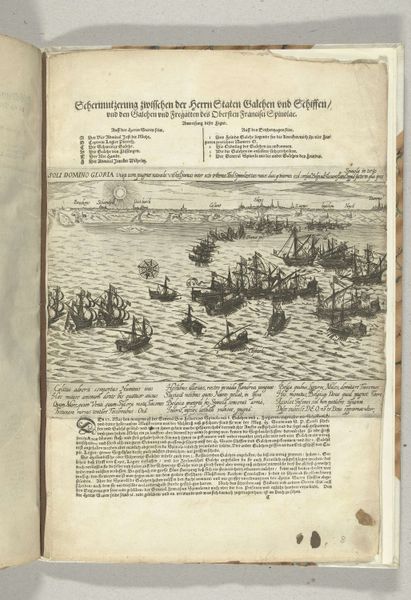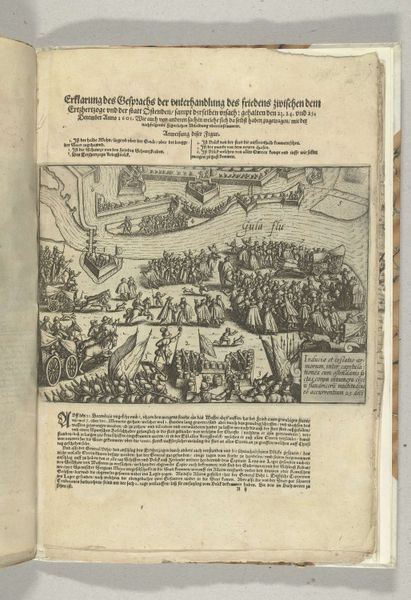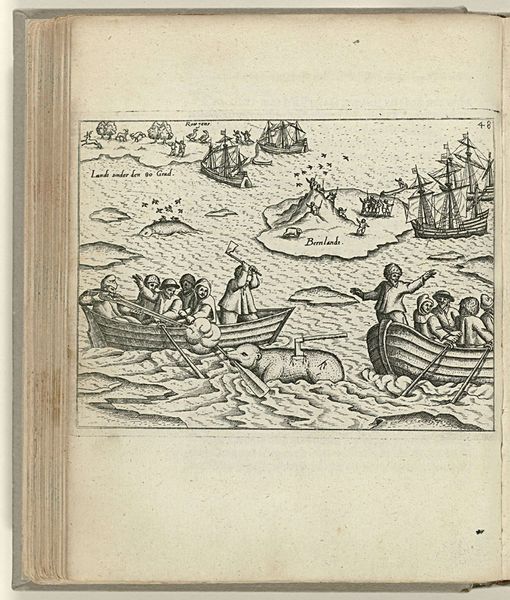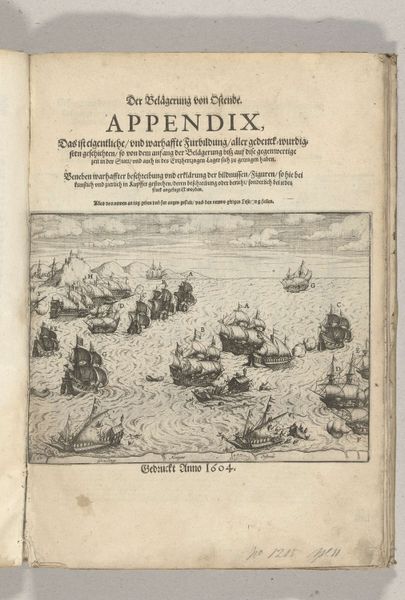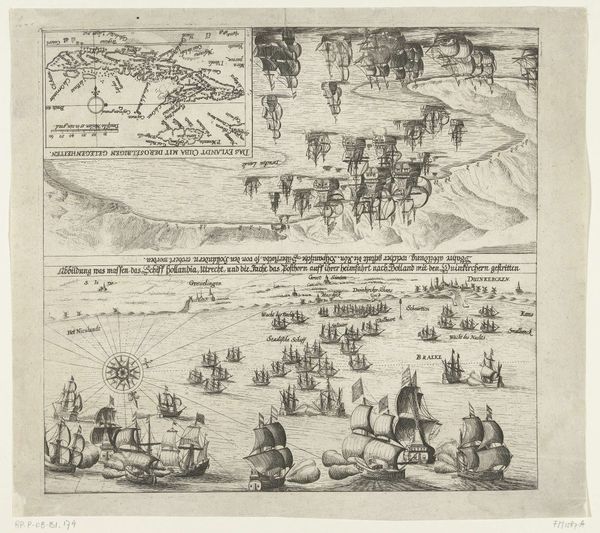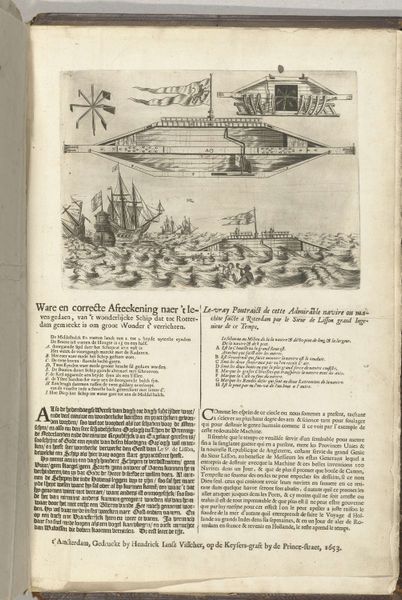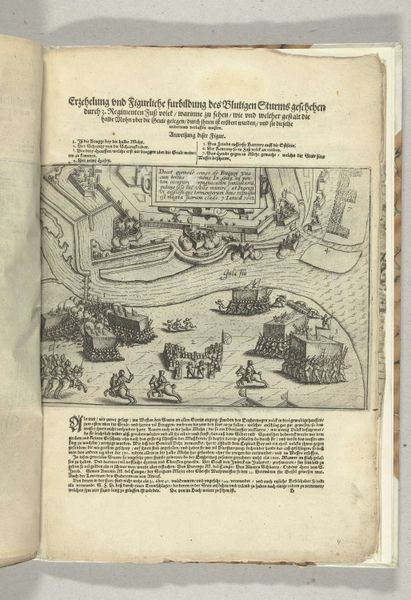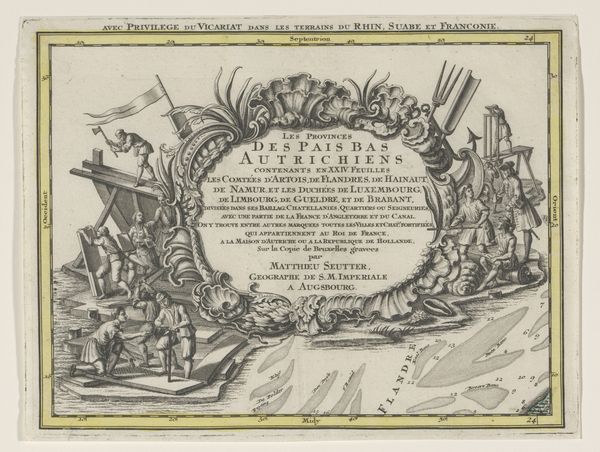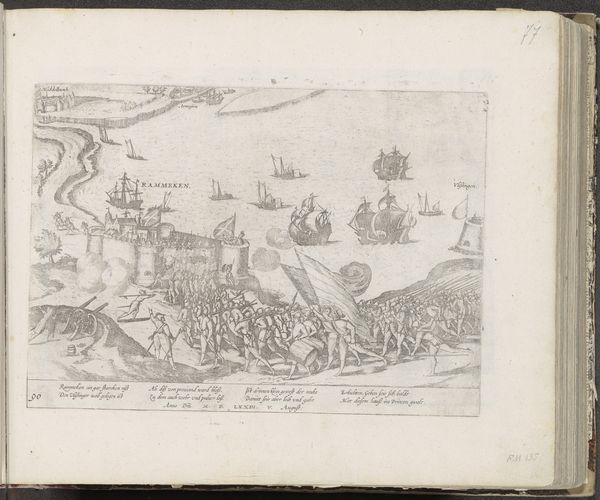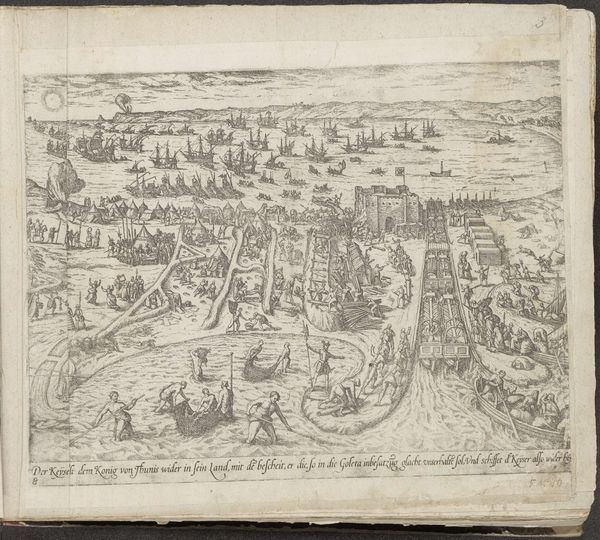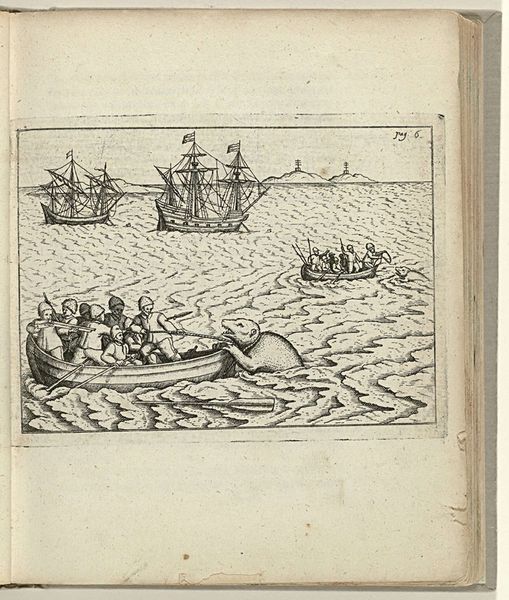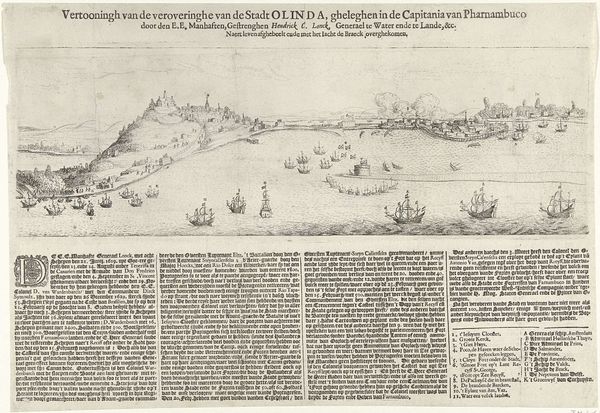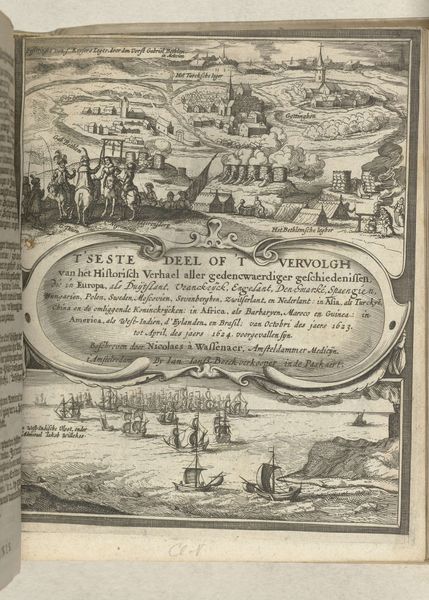
print, paper, engraving
#
narrative-art
#
baroque
# print
#
landscape
#
paper
#
history-painting
#
engraving
Dimensions: height 173 mm, width 235 mm, height 350 mm, width 240 mm
Copyright: Rijks Museum: Open Domain
Curator: What a fascinating print! This piece, entitled "Vernietiging van Spaanse galeien, 3 oktober 1602," or "Destruction of Spanish Galleys, October 3, 1602" commemorates a historical naval battle. The piece itself dates from just after the event, sometime between 1602 and 1604, and is currently held here at the Rijksmuseum. What's your first impression of it? Editor: The whole thing reads like organized chaos, doesn't it? So many ships crammed into this little patch of sea—it makes me think of the sheer claustrophobia of naval warfare. And there's this intense feeling of confined action; it’s not an open, sweeping vista. Curator: Absolutely. And note the Baroque landscape style. It definitely enhances the drama. You know, landscapes, especially marine scenes, were increasingly popular as vehicles for narrative and historical painting during this era. So it's not just a seascape, it's history in action. Editor: What’s striking is how everything is so meticulously rendered. You can practically count the cannons. Is this focus on detail intended to glorify military precision? Curator: That's perceptive. Details matter, and their meticulous rendering here almost sanctifies Dutch naval might. The event itself—the Dutch victory—was critical in establishing their power. You can see those tiny flags as visual proof of triumph. Editor: Those flags become symbols then, right? Assertions of cultural identity and expanding power. Curator: Indeed. Notice the overall composition. The ships aren't randomly scattered; the placement creates diagonals, directing our eyes to points of engagement and emphasizing the organized nature of the Dutch fleet. There are definitely symbols loaded in. Editor: It's as though the artist is deliberately staging this maritime theater, turning a messy, violent event into a structured display of Dutch heroism. The use of print – the multiple available copies– makes it accessible for broad consumption, it helps to spread and consolidate such national heroic accounts. It is fascinating to see how the combination of chaos and a well-structured image ends up speaking of power, even in defeat. Curator: Yes! It’s about crafting and sharing a particular story for generations to come, what we today could call 'visual propaganda'. Editor: Absolutely. An enduring visual representation of Dutch maritime strength, and a fascinating piece of history, told on paper. Curator: A tiny time capsule for national pride, quite powerful, considering it’s just ink on paper!
Comments
No comments
Be the first to comment and join the conversation on the ultimate creative platform.
